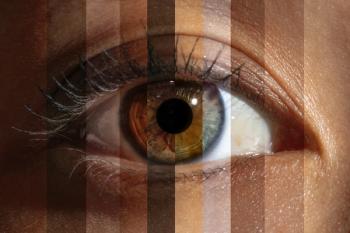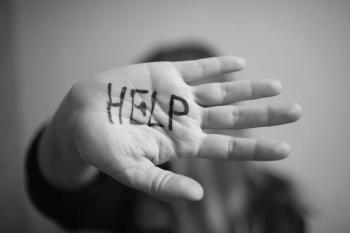
- May digital edition 2020
- Volume 12
- Issue 5
Hope in the time of COVID-19
The coronavirus pandemic is unlike anything we have seen in our lifetime. The virus has spread to every continent on Earth (except Antarctica), and the number of infected continues to swell, along with the death toll.
Information flows at lightning speed, with each day seeming to bring worse news than the day before. The airwaves are “all coronavirus, all the time,” and the fear and uncertainty surrounding the outbreak and the never-before-seen disruption to our daily lives can be overwhelming. The virus has forced the cancellation of major events, postponed sports seasons, and sent many into self- or government-imposed quarantine and self-isolation.
Related:
Yet even in most tragedies there are reasons for hope. With all the news seemingly focusing on the bad, even for the optimist hope may be hard to see. But it is there. I want to mention a few.
It could be much, much worse
The first, most important point to remember is the vast majority of people infected with COVID-19 recover.
Estimates now suggest that 99 percent of people infected1 with the virus will recover. Some people have no symptoms at all. While thousands of people have died, the overall death rate is about 1 percent (or perhaps even lower once all cases are tested and confirmed), far less than Middle East respiratory syndrome (MERS; about 34 percent),2 severe acute respiratory syndrome (SARS; about 11 percent),3 or Ebola (90 percent)4-though higher than the average seasonal flu (0.1 percent).5
Related:
The loss of life related to this infection is horrific and far more cases will be confirmed, but based on the mortality rates alone it could be far worse.
Children seem to be infected less often and have a milder form of the disease. According to the United States Centers for Disease Control and Prevention (CDC), the vast majority of infections so far have afflicted adults. And when kids are infected, they tend to have milder disease.6 For children and their parents, this is good news.
Related:
However, it’s important to note that children can develop infection. A recent study from China7 from early in the outbreak demonstrated a small number of children, especially infants and toddlers, can develop serious infection. As is true generally, it is likely children can spread infection in the absence of symptoms,8 though how often this occurs is unclear.
Coronavirus testing
After a slow roll out, the United States is working overtime to screen thousands for the novel coronavirus. As of April 10, 2020, over 2,373,343 tests had been performed between the CDC and private labs with the number increasing daily.9 Of that number, over 380 percent (1,912,056) of the tests were negative.
The U.S. Food and Drug Administration has granted emergency use authorizations to two more companies’ COVID-19 tests. Tests by Quest Diagnostics and Quidel Corporation got the nod for distribution within the U.S. without prior clearance or approval.
Related:
Quest Diagnostics has expanded its COVID-19 testing capacity to 25,000 tests per day, significantly higher than initially forecast. Quest is now performing COVID-19 testing at 12 laboratories in its national network. In addition, Quest now expects to further expand capacity to 30,000 COVID-19 tests per day.10
Quidel’s Lyra SARS-CoV-2 Assay has received expanded Emergency Use Authorization (EUA) claims from the Food and Drug Administration (FDA) to allow testing.11
Testing for the disease is of paramount importance. Without testing data on COVID-19, we cannot possibly understand how the pandemic is progressing, and we cannot respond appropriately to the threat. Short of a vaccine, any return to a semblance of normal will involve widespread testing.
Related:
COVID-19 treatment
The World Health Organization (WHO) on March 18, 2020, announced a study to compare treatment strategies in a streamlined clinical trial design. For its SOLIDARITY12 study, the WHO chose the experimental antiviral remdesivir; the anti-malaria medication chloroquine (or hydroxychloroquine); a mixture of the HIV drugs lopinavir and ritonavir; and the human immunodeficiency virus (HIV) drug combination plus interferon-beta, a molecule that regulates inflammation and has lessened disease severity in mammals infected with MERS.
Other trials are also underway; at least 12 potential COVID-19 treatments are being tested, including drugs already in use for HIV and malaria, experimental compounds that work against an number of viruses in animal experiments, and antibody-rich plasma from people who have recovered from COVID-19.13
Related:
Doctors and researchers around the world are tackling the problem with an urgency. On March 28, 2020, the FDA provided emergency-use authorization for hydroxychloroquine, a medicine approved for treating malaria, lupus, and rheumatoid arthritis, for people hospitalized with COVID-19. A recent listing14 identified more than 70 candidate molecules, including 15 antivirals, potent human immune system suppressants, and high-risk oncology treatments already approved by the FDA to treat other conditions that could be tested against the virus.
The National Institutes of Health’s ClinicalTrials.gov15 lists more than 100 clinical investigations focused on COVID-19 from around the world, with sponsors including medical centers, pharmaceutical companies, and national research institutes. In time, it is likely we will see direct-acting antivirals tailored to the most vulnerable molecular targets on the COVID-19 virus.
Related:
One investigational treatment being considered for COVID-19 involves the use of plasma collected from patients previously infected with the virus. In a 2015 study,16 researchers demonstrated how blood plasma might be effective to significantly reduce mortality rates if administered to those who have contracted severe acute respiratory infections soon after their symptoms first appear. It is possible recovered plasma containing antibodies to the COVID-19 virus might be effective against the infection. Recovered plasma has been studied in outbreaks of other respiratory infections, including the 2009-2010 H1N1 influenza virus pandemic, the 2003 SARS-CoV-1 epidemic, as well as the 2012 MERS-CoV epidemic.17
A coronavirus vaccine?
Since the genetic sequence of COVID-19 was first published,18 all eyes have turned to the prospect of a vaccine because only a vaccine can prevent infection. Scientists are attempting to gain a better understanding of the virus' genetic makeup, how it infects cells, and how to effectively treat it. The long-term strategy to combat COVID-19 is to develop a vaccine.
The COVID virus belongs to the coronavirus family of viruses, so named because microscopically they appear with crownlike projections on their surface. See Figure 1.
Related:
These projections enable the virus to enter human cells where it can replicate. In developing a vaccine targeting COVID-19, scientists are looking at these projections because the projections are prevalent in coronaviruses seen previously-including the one that caused the SARS outbreak. This similarity among the coronaviruses has given researchers a head start on building vaccines against the proteins in these projections and, using animal models, they have demonstrated they can generate an immune response.19
Many companies around the world are working on a vaccine, developing different ways to stimulate the immune system. As of 8 April 2020, the global COVID-19 vaccine landscape includes 115 vaccine candidates, of which 78 are confirmed as active.20 Of those 78, 73 are in exploratory or preclinical stages. The most advanced candidates have recently moved into clinical development.
Related:
Biotech companies like Moderna Therapeutics have been able to rapidly generate new vaccine designs against COVID-19 by taking a piece of the genetic code for these surface proteins and fusing it with nanoparticles that can be injected into the body.21 Moderna Therapeutics has shipped the first batches of its COVID-19 vaccine. The vaccine was created just 42 days after the genetic sequence of the virus was released by Chinese researchers in mid-January. The first vials were sent to the National Institute of Allergy and Infectious Diseases (NIAID) in Bethesda, MD, where the vaccine will be readied for human testing as early as April 2020.21
Imperial College London is designing a similar vaccine using coronavirus RNA.22 Pennsylvania biotech company Inovio is generating strands of DNA it hopes will stimulate an immune response.23
Related:
Financial help on the way
One certain fact is this pandemic has wrought havoc on the U.S economy. The CDC recommendation that all routine health care be suspended has brought most optometric practices as well as most service industries to a screeching halt. The U.S. government has funded several stimulus bill to help ease the economic burden.
Little River Band’s song “Help Is On the Way” has an appropriate line: ”Hang on/Help is on its way.” Will stimulus loans or grants replace the income lost due to the pandemic? No. But it is help. And any and all help is appreciated.
Related:
Newly approved legislation provides paid sick leave and paid family and medical leave for some American workers, free testing for people without insurance, and added funding to states for Medicaid.24
The Internet and telemedicine
Perhaps the longest-lasting effect of the coronavirus pandemic will be the widespread use of telemedicine. As the COVID-19 virus stresses the healthcare system, telemedicine is stepping into the spotlight and allowing healthcare providers and caregivers to better respond to patients.
Telehealth is emerging as an effective and sustainable solution for precaution, prevention, and treatment to stem the spread of COVID-19. Many chronic patients have scheduled teleconsultations from their home, avoiding face-to-face clinic visits and hence minimizing their risks of exposure to COVID-19.25
Related:
Social distancing
To slow the spread of COVID-19 through communities, the CDC has encouraged Americans to practice “social distancing” measures. Experts point to lessons from history indicating these measures work, including those from the 1918 Spanish influenza pandemic.26 That does not make it any easier. Unless you are a dedicated introvert, you may be going stir crazy by now.
Fortunately, help is available-the Internet. The Internet allows us to practice social distancing yet also preserve at least some social connections. People in quarantine or self-isolation can seek care, visit friends, “see” family and doctors virtually, and provide updates on their conditions. I have a new grandson. I know I would go crazy without FaceTime to see the little guy.
Related:
Conclusion
This coronavirus epidemic is a worldwide problem-one that will likely become even bigger in the coming weeks and months. For those infected, as well as those trying to avoid infection, these are difficult times. But amid all the doom and gloom, there are reasons to remain hopeful.
As Thomas Paine famously wrote in The American Crisis, “These are the times that try men’s souls.”27 While Paine was describing a coming battle with a human enemy, we are at this moment in history in a conflict with an unseen, mindless, unforgiving foe.
Yet we are a resilient people. The greatest minds are feverishly at work on the problem, and all the resources necessary to combat the virus have been made available. There is nothing the American people cannot overcome. This too shall pass.
More by Dr. Bowling:
References:
1. Mizumoto K, Chowell G. Estimating risk for death from 2019 novel coronavirus disease, China, January-February 2020. Emerg Infect Dis. 2020 Mar 13;26(6). doi: 10.3201/eid2606.200233.
2. World Health Organization. Middle East respiratory syndrome coronavirus (MERS-CoV). MERS monthly summary November 2019. Available at: https://www.who.int/emergencies/mers-cov/en/. Acessed 4/7/20.
3. World Health Organization. Consensus document on the epidemiology of severe acute respiratory syndrome (SARS). Available at: https://www.who.int/csr/sars/en/WHOconsensus.pdf. Accessed 4/7/20.
4. World Health Organization. Ebola virus disease. Available at: https://www.afro.who.int/health-topics/ebola-virus-disease. Accessed 4/7/20.
5. Centers for Disease Control and Prevention. Disease Burden of Influenza. Available at: https://www.cdc.gov/flu/about/burden/index.html. Accessed 4/7/20.
6. Centers for Disease Control and Prevention. Frequently Asked Questions. Available at: https://www.cdc.gov/coronavirus/2019-ncov/faq.html?CDC_AA_refVal=https%3A%2F%2Fwww.cdc.gov%2Fcoronavirus%2F2019-ncov%2Fprepare%2Fchildren-faq.html#anchor_1584387482747. Accessed 4/7/20.
7. Dong Y, Mo X, Hu Y, Qi X, Jiang F, Jiang Z, Tong S. Epidemiological characteristics of 2143 pediatric patients with 2019 coronavirus disease in China. Pediatrics. 2020 Mar 16. pii: e20200702. doi: 10.1542/peds.2020-0702.
8. Centers for Disease Control and Prevention. How COVID-19 Spreads. Available at: https://www.cdc.gov/coronavirus/2019-ncov/prepare/transmission.html?CDC_AA_refVal=https%3A%2F%2Fwww.cdc.gov%2Fcoronavirus%2F2019-ncov%2Fabout%2Ftransmission.html. Accessed 4/7/20.
9. The COVID Tracking Project. US Historical Data. Available at: https://covidtracking.com/us-daily/. Accessed 4/7/20.
10. Quest Diagnostics. Quest Diagnostics Media Statement about COVID-19 Testing. Available at: https://newsroom.questdiagnostics.com/COVIDTestingUpdates. Accessed 4/7/20.
11. Quidel’s Lyra SARS-CoV-2 Assay Receives Authorization for Expanded Use for Molecular Detection of COVID-19; Also Receives CE Mark, Health Canada Authorization. Available at: https://www.biospace.com/article/releases/quidel-s-lyra-sars-cov-2-assay-receives-authorization-for-expanded-use-for-molecular-detection-of-covid-19-also-receives-ce-mark-health-canada-authorization/. Accessed 4/7/20.
12. UN News. UN health chief announces global ‘solidarity trial’ to jumpstart search for COVID-19 treatment. Available at: https://news.un.org/en/story/2020/03/1059722. Accessed 4/7/20.
13. Kupferschmidt K, Cohen J. Race to find COVID-19 treatments accelerates. Science. 2020 Mar 27;367(6485):1412-1413.
14. Institute. COVID-19 Treatment and Vaccine Tracker. Available at: https://milkeninstitute.org/sites/default/files/2020-03/Covid19%20Tracker%20NEW3-24-20-REVISED.pdf. Accessed 4/10/20.
15. Clinicaltrials.gov. 440 Studies found for: COVID. Available at: https://clinicaltrials.gov/ct2/results?cond=COVID&term=&cntry=&state=&city=&dist. Accessed 4/10/20.
16. Mair-Jenkins J, Saavedra-Campos M, Baillie JK, Cleary P, Khaw FM, Lim WS, Makki S, Rooney KD, Nguyen-Van-Tam JS, Beck CR; Convalescent Plasma Study Group. The effectiveness of convalescent plasma and hyperimmune immunoglobulin for the treatment of severe acute respiratory infections of viral etiology: a systematic review and exploratory meta-analysis. J Infect Dis. 2015 Jan 1;211(1):80-90.
17. U.S. Food and Drug Administration. Revised Information for Investigational COVID-19 Convalescent Plasma. Available at: https://www.fda.gov/vaccines-blood-biologics/investigational-new-drug-ind-or-device-exemption-ide-process-cber/revised-information-investigational-covid-19-convalescent-plasma?utm_campaign=What%27sNew2020-03-24&utm_medium=email&utm_source=Eloqua. Accessed 4/7/20.
18. Huang C, Wang Y, Li X, Ren L, Zhao J, Hu Y, Zhang L, Fan G, Xu J, Gu X, Cheng Z, Yu T, Xia J, Wei Y, Wu W, Xie X, Yin W, Li H, Liu M, Xiao Y, Gao H, Guo L, Xie J, Wang G, Jiang R, Gao Z, Jin Q, Wang J, Cao B. Clinical features of patients infected with 2019 novel coronavirus in Wuhan, China. Lancet. 2020 Feb 15;395(10223):497-506.
19. Shang W, Yang Y, Rao Y Rao X. The outbreak of SARS-COV-2 pneumonia calls for viral vaccines. NPJ Vaccines. 2020 Mar 6;5:18. doi: 10.1038/s41541-020-0170-0.
20. Le TT, Andreadakis Z, Kumar A, Roman RG, Tollefsen S, Saville M, Mayhew S. The COVID-19 vaccine development landscape. Nature Reviews. Available at: https://www.nature.com/articles/d41573-020-00073-5. Accessed 4/10/20.
21. Ryan J. Coronavirus vaccines: Drug trials, chloroquine and treatments for COVID-19. CNet. Available at: https://www.cnet.com/how-to/coronavirus-vaccines-the-drugs-in-development-to-treat-covid-19/. Accessed 4/7/20.
22. Angus T. Developing the coronavirus vaccine. Imperial College of London. Available at: http://wwwf.imperial.ac.uk/blog/photography/2020/03/13/developing-the-coronavirus-vaccine/. Accessed 4/7/20.
23. Garde D. How one company made $208 million on an untested coronavirus vaccine. Stat. Available at: https://www.statnews.com/2020/03/13/how-one-company-made-208-million-on-an-untested-coronavirus-vaccine/. Accessed 4/7/20.
24. Shmerling RH. Is there any good news about the coronavirus pandemic? Harvard Health Publishing. Available at: https://www.health.harvard.edu/blog/the-coronavirus-pandemic-is-not-good-but-the-news-is-not-all-bad-2020031919247. Accessed 4/7/20.
25. Siwici B. Telemedicine during COVID-19: Benefits, limitations, burdens, adaptation. Healthcare IT News. Available at: https://www.healthcareitnews.com/news/telemedicine-during-covid-19-benefits-limitations-burdens-adaptation. Accessed 4/7/20.
26. Kaltwasser J. Analysis: Spanish Flu Pandemic Proves Social Distancing Works. Available at: https://www.contagionlive.com/news/analysis-spanish-flu-pandemic-proves-social-distancing-works. Accessed 4/9/20.
27. Conner J. A Brief Publication History of the “Times That Try Men’s Souls.” Available at: https://allthingsliberty.com/2016/01/a-brief-publication-history-of-the-times-that-try-mens-souls/. Accessed 4/9/20.
Articles in this issue
over 5 years ago
Key elements to know about MIPS in 2020over 5 years ago
Masquerading maculopathy: The importance of correct diagnosisover 5 years ago
Misdiagnosis when clinical findings don’t make senseover 5 years ago
How to differentiate CTK from DLK in post-surgical patientsover 5 years ago
Time in range as an alternative to HbA1cover 5 years ago
Engineer a specialty contact lens practiceover 5 years ago
Elevate standard of care with artificial intelligenceover 5 years ago
Optometry’s Apollo 13 moment during COVID-19Newsletter
Want more insights like this? Subscribe to Optometry Times and get clinical pearls and practice tips delivered straight to your inbox.



















































.png)


